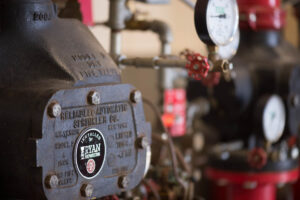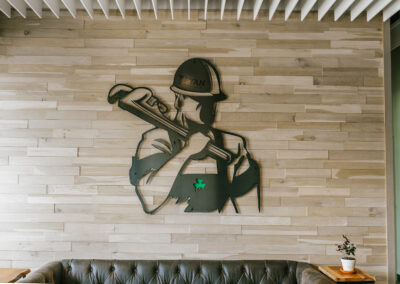 Wet systems are the most popular type of fire suppression system installed in the U.S. with dry systems taking second place. Many state building codes stipulate that dry pipe systems can only be used in spaces where temperatures may be cold enough to freeze the water in a wet pipe system, which makes them popular choices for unheated buildings, outside canopies attached to heated buildings, or refrigerated coolers.
Wet systems are the most popular type of fire suppression system installed in the U.S. with dry systems taking second place. Many state building codes stipulate that dry pipe systems can only be used in spaces where temperatures may be cold enough to freeze the water in a wet pipe system, which makes them popular choices for unheated buildings, outside canopies attached to heated buildings, or refrigerated coolers.
So why convert a wet system to a dry system? There may be a wet system in part of a structure that was once heated, but is not heated any longer. Perhaps part of the building goes unused during long periods of time leaving the space unconditioned. Regardless, if a wet system is installed in areas with potential freezing temperatures, it may be tempting to convert to a dry system. If so, here are some things to consider.
First off, it is more difficult to convert a wet system to a dry system than it is to convert a dry system into a wet due to the codes regulating dry systems. For instance, dry systems require a greater pitch to the pipe to allow any water or condensation to drain, so pipe pitch would have to be adjusted. Dry systems require larger diameter pipe, which can lead to replacing of a large portion of the existing pipe. Also, dry systems can require different sprinkler heads, valves and other equipment. So in many instances, it’s not so much converting, as it is a change out of the entire system.
There are also many indirect variables that impact the feasibility of converting a wet system to a dry system. For example, since much of the pipe may have to be replaced, access is critical. If the piping is above a ceiling, that creates a challenge. Secondly, water demand is higher for a dry system (thus the larger diameter pipe requirements). Dry systems have higher water supply requirements and the available water supply may not be sufficient. Lastly, dry systems operate differently than wet systems. If the sprinkler head furthest from the water source is activated in a dry system, the water must travel to that area in a specified amount of time. If it does not, the system fails to meet code.
Converting a wet system to a dry system has inherent challenges, and those challenges can make the dry system application impractical. However, there are other options to consider.
- Anti-freeze systems – These are wet systems with an anti-freeze additive and they come with their own requirements and challenges, so it’s wise to investigate thoroughly.
- Heat the space or pipe – This can be the simplest solution, however not always the most cost effective. Is it possible to heat this space? Is it possible to wrap the pipe with heat tape cost-effectively?
While converting a wet system to a dry system is possible, it has its fair share of challenges. There can be a number of different variables that affect this decision. Consider Ryan Fireprotection as a resource for navigating the codes, requirements and costs associated with this investment.
